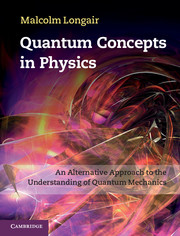Book contents
- Frontmatter
- Contents
- Preface
- Acknowledgements
- Part I The Discovery of Quanta
- 1 Physics and theoretical physics in 1895
- 2 Planck and black-body radiation
- 3 Einstein and quanta 1900–1911
- Part II The Old Quantum Theory
- Part III The Discovery of Quantum Mechanics
- Epilogue
- Notes
- References
- Name index
- Subject index
3 - Einstein and quanta 1900–1911
from Part I - The Discovery of Quanta
Published online by Cambridge University Press: 05 February 2013
- Frontmatter
- Contents
- Preface
- Acknowledgements
- Part I The Discovery of Quanta
- 1 Physics and theoretical physics in 1895
- 2 Planck and black-body radiation
- 3 Einstein and quanta 1900–1911
- Part II The Old Quantum Theory
- Part III The Discovery of Quantum Mechanics
- Epilogue
- Notes
- References
- Name index
- Subject index
Summary
Einstein in 1905
The next great steps were taken by Albert Einstein and it is no exaggeration to state that he was the first person to appreciate the full significance of quantisation and the reality of quanta. He showed that these are fundamental aspects of all physical phenomena, rather than just a ‘formal device’ for accounting for the Planck distribution. From 1905 onwards, he never deviated from his belief in the reality of quanta – it was some considerable time before the great figures of the day conceded that Einstein was indeed correct.
Einstein completed what we would now call his undergraduate studies in August 1900. Between 1902 and 1904, he wrote three papers on the foundations of Boltzmann's statistical mechanics. In 1905, Einstein was 26 and employed as ‘technical expert, third class’ at the Swiss patent office in Bern. In that year, he completed his doctoral dissertation on A new determination of molecular dimensions, which he presented to the University of Zurich on 20 July 1905. In the same year, he published three papers which are among the greatest classics in the literature of physics. Any one of them would have ensured that his name remained a permanent fixture in the scientific literature. These papers are:
(1) On a heuristic point of view concerning the production and transformation of light (Einstein, 1905a);
(2) On the motion of small particles suspended in stationary liquids required by the molecular-kinetic theory of heat (Einstein, 1905b);
(3) On the electrodynamics of moving bodies (Einstein, 1905c).
- Type
- Chapter
- Information
- Quantum Concepts in PhysicsAn Alternative Approach to the Understanding of Quantum Mechanics, pp. 48 - 68Publisher: Cambridge University PressPrint publication year: 2013



